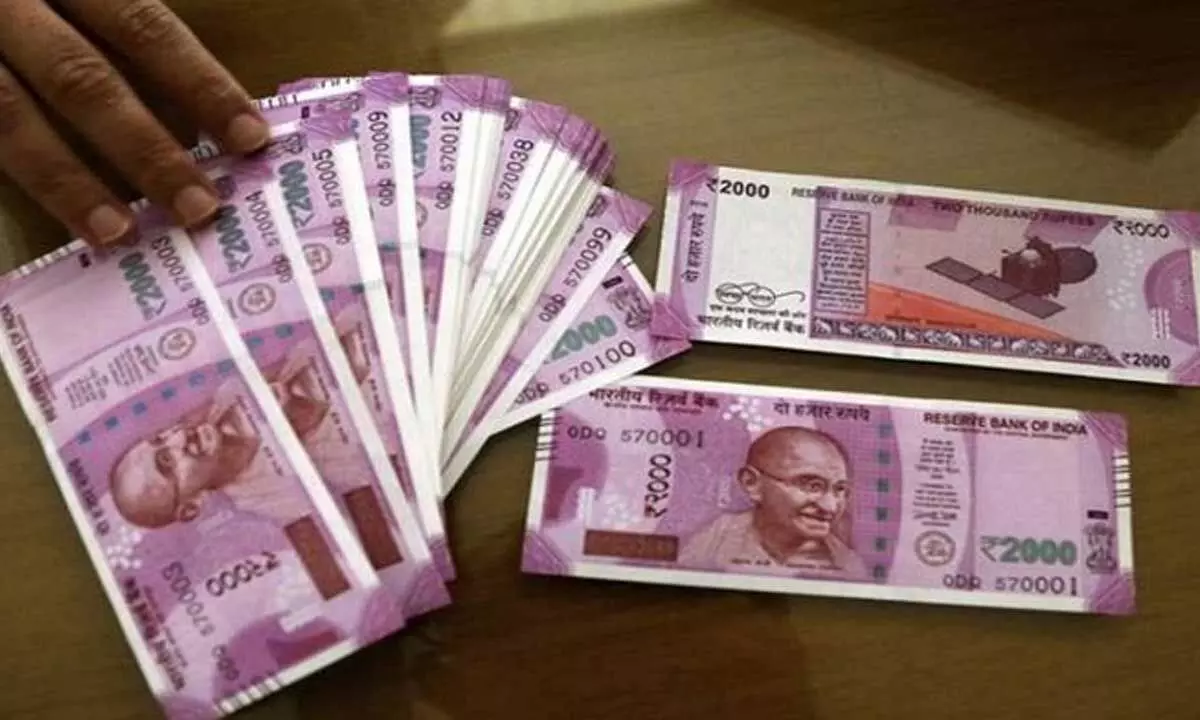PHDCCI suggests 5-pronged strategy to revitalize pvt investments in India
Says enhanced consumption, increased capacity utilization in factories, creating employment, enhancing quality of social infra & strengthening economic growth will go a long way in revitalizing pvt investments
image for illustrative purpose

The industry body, PHD Chamber of Commerce & Industry (PHDCCI) has suggested 5-pronged strategy to revitalize private investments. The industry body said that Budget 2023-24 must focus on revitalizing private investments, consumption and employment creation.
The five-pronged strategy to revitalize the private investments include enhanced consumption, increased capacity utilization in the factories, creating employment, enhancing quality of social infrastructure and strengthening economic growth.
Talking to Bizz Buzz, after meeting Sanjay Malhotra, OSD to the revenue department of the finance ministry, Saket Dalmia, President, PHDCCI, said: "Private investment in Indian economy, which has come down in the recent past, must increase and we have suggested to government that it is the demand which can drive this."
The Union Budget 2023-24 is being presented at a crucial juncture of geo-political uncertainties, high inflation and slowing world economic growth. At this juncture, calibrated steps to enhance domestic sources of growth would be crucial to maintain the steady economic growth trajectory, he said.
In its interaction with Revenue Secretary, Government of India, the industry body suggested measures related to direct taxes and indirect taxes for the growth and development of Indian economy.
Suggestions on direct taxes includes, taxing real income and not notional income, support to industries who suffered majorly because of Covid, measures to increase revenue and widen tax net, enhancing of presumptive tax, boost to infrastructure and suggestions for ease of /business promoting compliance and boost to economy. In the indirect taxes the industry body suggested that GST, as envisaged as good and simple tax, needs a continuous improvisation and broad policy changes from time to time to provide overall objective of ease of business. Certain highlighted suggestions are rationalization of multiple GST rates into 2-3 tier GST rates, decriminalization of offences in GST law by increasing threshold from Rs 5 crore to Rs 20 crore and should be prosecuted on the basis fraud intent only.
To enhance the momentum in private investments, there is a need to percolate ease of doing business at the factory level, rationalization of cost of doing business, rationalization of taxation, state-of-the-art infrastructure, and enhanced incomes in the agriculture sector would go a long way to revitalize the private investments in the country, he said. To enhance the consumption in the economy, there is a need to increase the tax rebate benefits for consumption expenditure.
Tax rebate on purchase of self-occupied house is given Rs 2 lakh only since past many years. This needs to be enhanced with the wider scope of consumption expenditure such as purchase of more than one house, purchase of car, along with other durables. Consumption expenditure rebate must be enhanced to Rs 5 lakh per annum. This will not only enhance the aggregate demand in the economy but also attract private investments, increase capacity utilization of the firms and create enormous employment opportunities in the economy, he added.
According to Dalmia, "Though consumption is the most significant ingredient to enhance the capacity utilization in the economy, but at this juncture reduced costs of doing business can play in a key role in increasing the efficiency of the enterprises and enhancing their production possibility frontiers."
The industry body suggested to reduce the costs of doing business including costs of capital, costs of power, costs of logistics, costs of land and availability of land and costs of labour, availability of skilled labour, costs of compliances should not be more than the top-3 manufacturing countries like China, United States and Japan.
To enhance the employment creation in economy, we suggest further reforms in the Agri and food processing sector with a great infusion of public investments in the agriculture infrastructure. Reforms in rural infrastructure logistics and a cold chain are required as it would help in increasing the level of food processing industry and rural entrepreneurship. This would lead to increased participation in the global agriculture and food exports. Exports of agri and food processing products should be increased to the level of $100 billion in next three years from the current level of around $50 billion (2021-22).
In India, majority of the travel and tourism industry is composed of MSMEs. In this regard, development of tourism infrastructure is of paramount importance and should be supported with adequate resources for the development of tourism infrastructure in the country which may lead in more employment generation, said Dalmia.
To enhance the quality of social infrastructure, government should focus on twin merit goods of education with skill development and basic health with safety must continue with a longer-term vision. Focus on education as well as skill development is the basic ingredient in order to reap the dividends of our demographic advantage and would hold a crucial place for supporting India in its journey towards being AatmaNirbhar at a developed economy by 2047, he said.
To strengthen the economic growth, infrastructure is one of the crucial sectors that propels overall growth and development of the Indian economy. The increased spending on infrastructure will give a multiplier effect to rejuvenate the aggregate demand in the economy. Undoubtedly, the robust growth of infrastructure is the key ingredient to realize the vision to become Atmanirbhar Bharat and a developed economy by 2047. At this juncture, we are sure that PM Gati Shakti National Master Plan and National Infrastructure Pipeline (NIP) will certainly boost the growth trajectory of infrastructure development in the country. We suggest that infrastructure investment in the economy must not be less than 10 per cent of the GDP to achieve state of art infrastructure and to become a developed economy by 2047.

